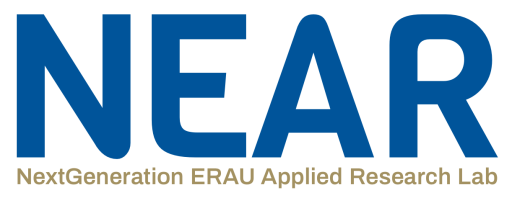Gale Unmanned Aircraft System
The objective of the Gale Unmanned Aircraft System (UAS) is to fill the existing critical low altitude data void in tropical systems by providing continuous measurements of the tropical cyclone boundary layer environment. The hurricane boundary layer environment is rarely observed due to the severe environment (50+ foot seas, 100+ knot winds, deep clouds), yet is critically important for improved understanding of storm systems.
Although hurricane track prediction error has been reduced by half over the past 15 years, no real gains have been made with regard to intensity forecasting, which can be off by two categories 5-10% of the time. Land-based UAS solutions have been investigated in the past (such as the Aerosonde), but are inefficient and impractical.
Some advantages of the Gale UAS air-deployed system is increased range due to the range of the mothership, no ingress/egress mission risk, and potential for significant personnel and cost savings (no team pre-deployments, minimal logistics set-up time, reduced travel and labor costs).
The Gale UAS is produced collaboratively by NOAA, Embry-Riddle, and DynaWerks Tech. The UAS is delivered to the storm by a Lockheed P-3 Orion Hurricane Hunter and launched via free-fall AXBT chute. Real-time data, including pressure, relative humidity, temperature and GPS, is transmitted via 400MHz LoS radio to the P-3. Additional data, including heading, true and indicated airspeed, orientation, altimeter altitude, aircraft orientation, accelerations, and derived wind speeds, are transmitted via 1.6GHz SatComm to ERAU DB. All data is recorded for later analysis.
The aircraft is stowed within a sabot tube that fits into a size ‘A’ sonobuoy tube, and features flexible wings and flight control surfaces that stow within the diameter of the fuselage. Once the sabot is deployed from the P-3’s AXBT free-fall chute, the sabot drag chute opens immediately, separating the sabot from the aircraft. Once the aircraft leaves the sabot tube, empennage flight control surfaces deploy and orient the vehicle during deceleration and free-fall. Once the aircraft has slowed, the wings deploy and the aircraft begins normal flight operations.
FAA NextGen Task E: Unmanned Aircraft Systems
Customers: Federal Aviation Administration (FAA) & Lockheed Martin Corporation
The primary purpose of this UAS project was to create a partnership between NASA’s Kennedy Space Center (KSC), the National Oceanic Atmospheric Administration (NOAA), and Embry-Riddle Aeronautical University to create a test range in restricted airspace at KSC that can be used to conduct weather-related research with an unmanned aerial system. The first focus of research for an acquired UAS will be on atmospheric sciences. Embry-Riddle worked with NOAA to develop a series of test flights, instrumented for data collection, and to integrate these flights into the restricted airspace at KSC's Shuttle Landing Facility. Lessons learned in the UAS testing, data collection, and analysis can then be used to enhance UAS operations and the engineering curriculum at the University.
Developing Unmanned Vehicle Air Control Interfaces within the National Airspace System
Customers: Command and Control Corporation & National Aeronautics and Space Administration (NASA)
The main purpose of this research project was to conduct a simulation study in order to test real-time software that more efficiently integrates future unmanned vehicle activities into the national airspace system.


